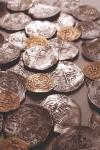The British Museum

The British Museum was established by Act of Parliament in 1753 and was opened in 1759. Its first collections comprised books, manuscripts, and perhaps most importantly, the vast collection of Sir Hans Sloane, whose bequest of biological, botanical, and ethnological specimens, antiquities, books, and prints had prompted the museum’s creation. Other notable acquisitions during the eighteenth century included Sir William Hamilton’s classical antiquities, objects from the South Seas donated by Captain Cook, and the first Egyptian mummies, courtesy of William and Pitt Lethieullier. From the beginning, members of the public were admitted to the museum, free of charge, but only after their application had been accepted. A member of staff would then take them round the museum. The process of scrutiny and issuance of tickets could take several weeks, and some visitors complained that their eventual visit was hurried and uninformative. A private tour conducted by one of the trustees, therefore, would have been a privilege enjoyed by few, and it is to be lamented that Captain Holland did not fully appreciate this.
